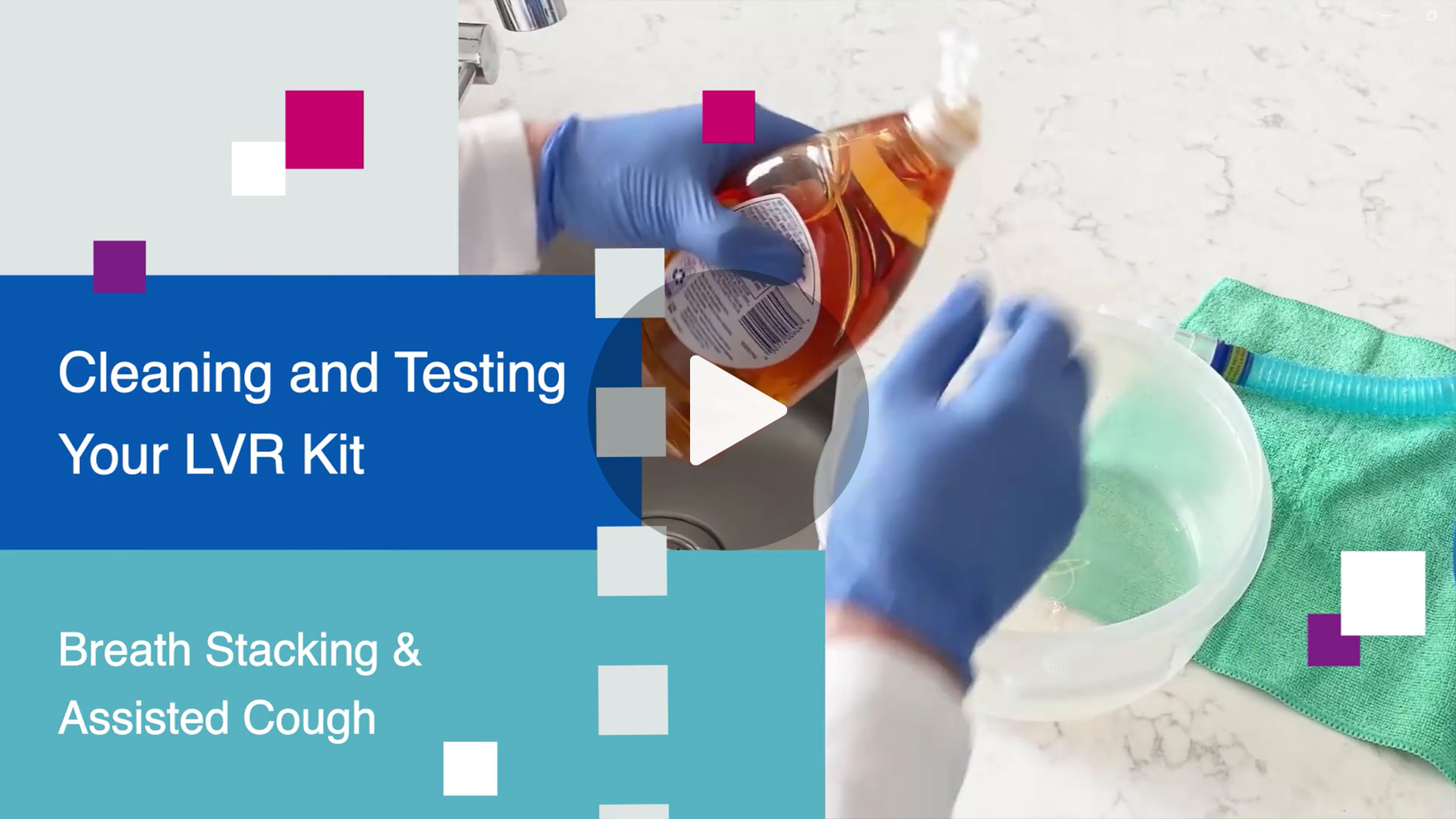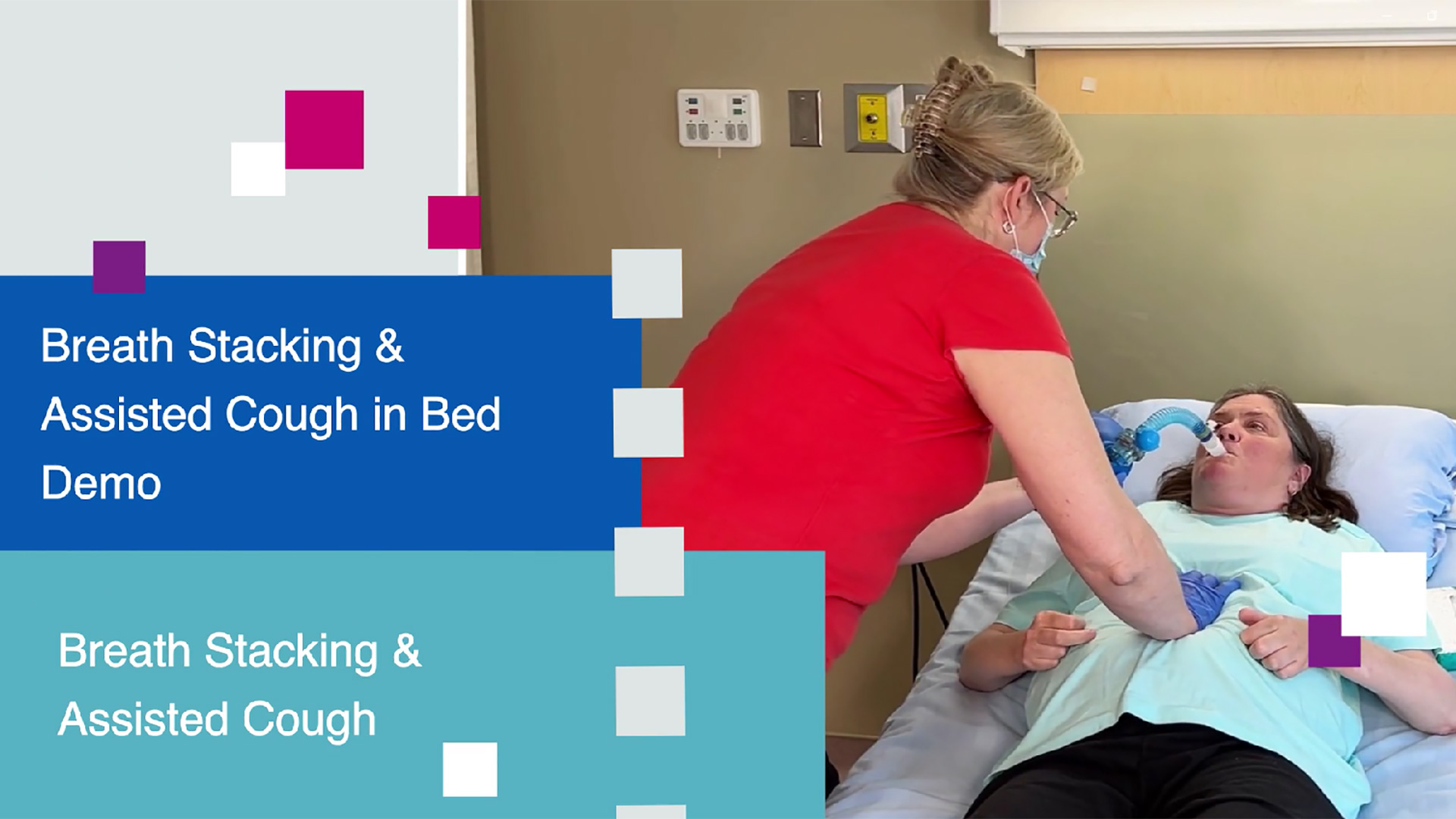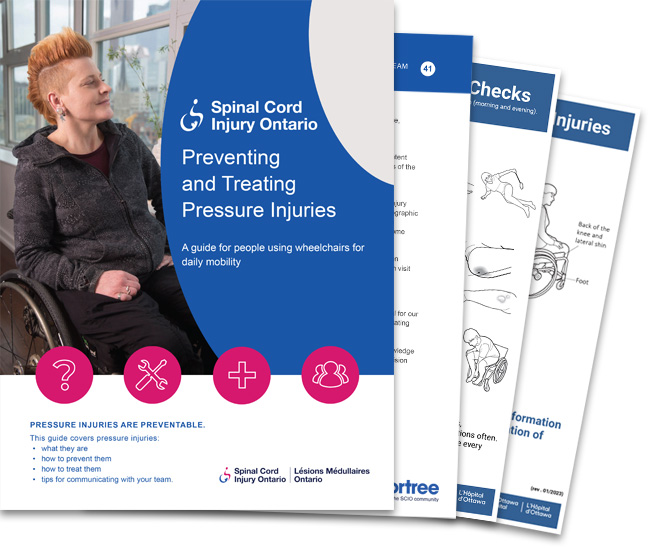Breath Stacking involves taking several, consecutive breaths without exhaling in between. This allows more air to accumulate in the lungs, stretching the lungs and naturally stimulating a productive cough.
In this video, Ron and Renata demonstrate breath stacking. Ron stacks five quick breaths using a mouthpiece connected to a resuscitator bag or volume ventilator – also known as a Lung Volume Recruitment device – or LVR bag.
Renata provides coaching and assistance with the LVR bag. In a hospital setting, whether you are infected or not, breath stacking requires wearing full PPE. At home we suggest you wear a mask and gloves if you have an infection. In this video Renata is wearing a mask and gloves. If you have paid attendants, they should always follow their organizational guidelines.
Ron uses a nose clip to help keep the air in his lungs. He holds the mouthpiece with his teeth and makes a tight seal with his lips. He takes a deep breath and holds it. Then with the air in his lungs, he breathes in more air as Renata gently squeezes the bag until Ron’s lungs are completely full. He signals with a wave when his lungs are full, and then releases the mouthpiece and coughs. For his last breath stack Ron holds his breath before releasing the air.
Do not hold your breath if it makes you dizzy, particularly when you are sitting up. Remember, if you feel too full, open your mouth and exhale!
So why would you want to Breath Stack? Breath Stacking stretches out the chest wall and lungs and helps keep chest muscles loose. It also helps get air down deep in lower lungs – to help get oxygen to those “hard to reach” lower air sacs. This helps maintain lung capacity over time and helps prevent the lungs from getting smaller faster as one ages. Also, when used in conjunction with the Assisted Cough technique, Breath Stacking helps your lungs build enough volume to provoke a productive cough.
To keep your lungs healthy Breath Stacking with Assisted Cough should be done 2 to 4 times a day – your Respiratory Therapist will set up a care plan that best suits your needs. In times of an infection BSAC may be done as often as every 10 minutes. It’s best to do LVR Breath Stacking before meals. But if you can’t, wait 30 minutes after eating. This will help reduce the risk of nausea and possible vomiting. The Assisted Cough – or “stomach thrust” – which we cover in other demo videos – may be used at any time to help move secretions. Your Respiratory Therapist can advise you if routine stomach thrusts should be used.
If you think the Breath Stacking and Assisted Cough techniques are something you could benefit from, connect with your healthcare team to discuss lung volume testing and how to get the tools and assistance you’ll need to get started.
Remember: These LVR kits are not intended for use as resuscitation bag.
Do NOT do Breath Stacking if you feel light-headed, you have chest discomfort, an upset stomach or you have low blood pressure.
Additional notes for healthcare providers:
Use of the LVR kit is not recommended in the presence of hemoptysis, recent or current barotrauma, bullous emphysema, severe obstructive pulmonary diseases, hypotension.
- Do NOT use the LVR kit if the individual has an inflated tracheostomy cuff or endotracheal tube.
- Individual assessment and precaution should be taken if any of the following exists: severe reflux, IVC filter, Kyphoscoliosis, or Baclofen Pump.
- An Assisted Cough should not be done for any individuals that are pregnant or that have had recent abdominal surgery or have an abdominal aneurysm.
We hope you enjoy this video series and watching these demonstrations. If you have any questions about what you learn, be sure to reach out to your healthcare team or service and resource providers like Spinal Cord Injury Ontario.
We would like to acknowledge and thank the people with lived experience who contributed their insights and tips to the development of this video series:
- Ron Rattie, Peer Support Program Coordinator, Spinal Cord Injury Ontario
- Sandra Burton
- Matt Sagan, Peer Support Volunteer, Spinal Cord Injury Ontario
We would also like to thank Hamilton Health Sciences staff who provided clinical subject matter expertise, source content and expert review of this video series:
- Renata Vaughan, RRT Senior Registered Respiratory Therapist, Hamilton Health Sciences Regional Rehabilitation Centre
- Jennifer Duley, APP Advanced Practice Physiotherapist, Acute Spine Unit, Hamilton Health Sciences.
This series was designed by Marty Doupe, Learning Architect at SCIO.
The Lung Volume Recruitment (LVR) bag and the attachments are available for purchase as a preassembled kit. Here are two vendor options in Canada: – Medigas carries the Mercury Medical Lung Volume Recruitment Kit, product number is TRSM161034502 and price is approximately $60 CAD, https://www.medigas.com/en – ProResp sells the Mercury Medical LVR kit by the box of 6, https://www.proresp.com/




